Understanding the Yellow Cockatiel: A Comprehensive Species Guide
Dive into the fascinating world of Yellow Cockatiels, exploring their unique traits, vibrant colors, and captivating behaviors in this comprehensive species guide.

Key Takeaways:
- Discover the enchanting world of the yellow cockatiel, including its origins and unique characteristics.
- Learn about the different mutations, such as the lutino and cinnamon varieties, and how to differentiate between male and female cockatiels.
- Gain insights into the care requirements for these beautiful pet birds, from the ideal bird cage setup to their social and dietary needs.
The yellow cockatiel, a vibrant member of the parrot family, has captivated bird enthusiasts with its bright yellow feathers and charming personality. This comprehensive guide will delve into the world of yellow cockatiels, exploring everything from their genetic mutations to their care requirements.
The Origins of the Yellow Cockatiel
The yellow cockatiel, also known as Nymphicus hollandicus, is a part of the cockatoo family and is native to the Australian continent. The second cockatiel mutation to be discovered, the lutino cockatiel, is one of the most popular color mutations in the aviculture world. This mutation was first observed in captivity in 1958 by Cliff Barringer at the Florida Parrot Jungle, marking a significant milestone in cockatiel breeding.
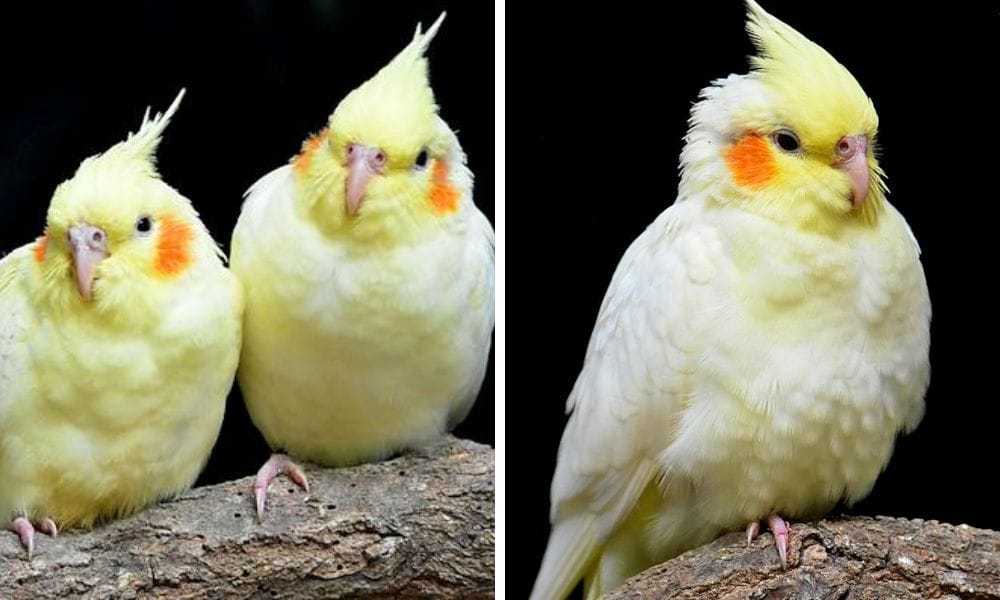
The Lutino Gene and Its Impact
The lutino gene is responsible for the gorgeous lutino cockatiel's white to light yellow plumage and bright orange cheek patches. This recessive gene removes the gray pigmentation, allowing the yellow and orange colors to become more prominent. The lutino cockatiel's red eyes are another distinctive feature, setting them apart from other parrots with a similar yellowish tint.
Identifying Male and Female Cockatiels
Differentiating between male and female cockatiels can be challenging, especially in lutino and other color mutations. Typically, male lutino cockatiels have brighter yellow head and tail feathers, while females may have a more subdued hue with barred patterns on the underside of their tail feathers. However, these differences can be subtle, and sometimes DNA testing is the only way to accurately determine the sex of a yellow cockatiel.
The Cinnamon Cockatiel: A Close Relative
The cinnamon cockatiel is another popular mutation, characterized by its warm, cinnamon-brown coloring replacing the normal grey cockatiel's primarily grey feathers. Like the lutino variety, the cinnamon cockatiel exhibits the same playful and affectionate behavior that makes cockatiels such beloved pet birds.
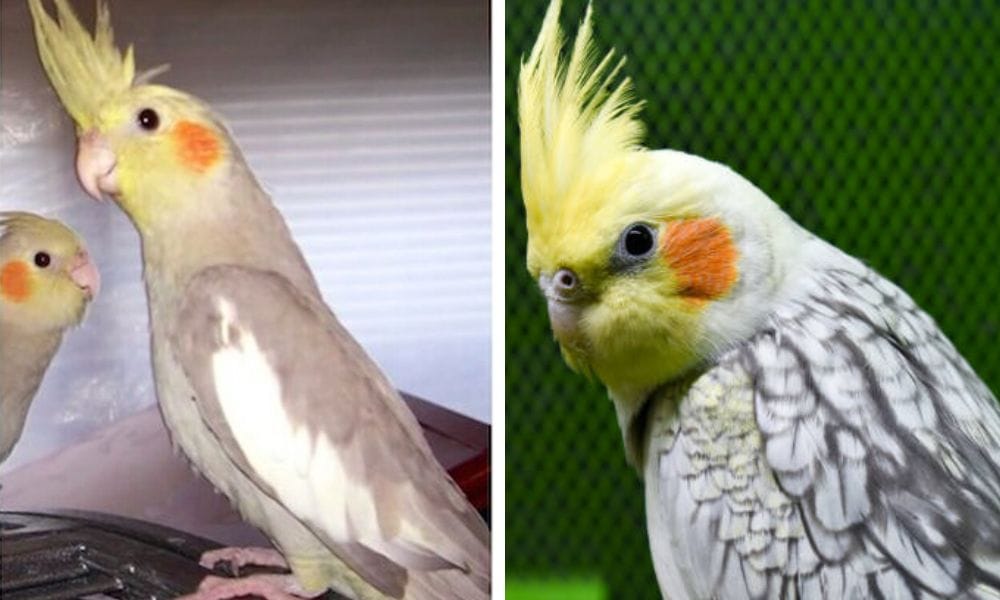
The Pearl Mutation: A Dazzling Pattern
The female pearl cockatiel showcases a stunning pattern of speckled feathers, often referred to as the 'pearl' or 'lacewing' pattern. This mutation adds a layer of complexity to the cockatiel's plumage, with each feather having a pearlescent appearance. The male pearl cockatiel may lose this patterning as it matures, while the female typically retains it throughout her life.
The Pied Mutation: A Unique Blend
Cockatiels with the pied mutation, such as the lutino pied or pearl pied, exhibit a mix of colored and white plumage. This results in prominent white flashes across their body, creating a striking contrast. The pied mutation can occur in combination with other mutations, leading to a diverse range of appearances within the species.
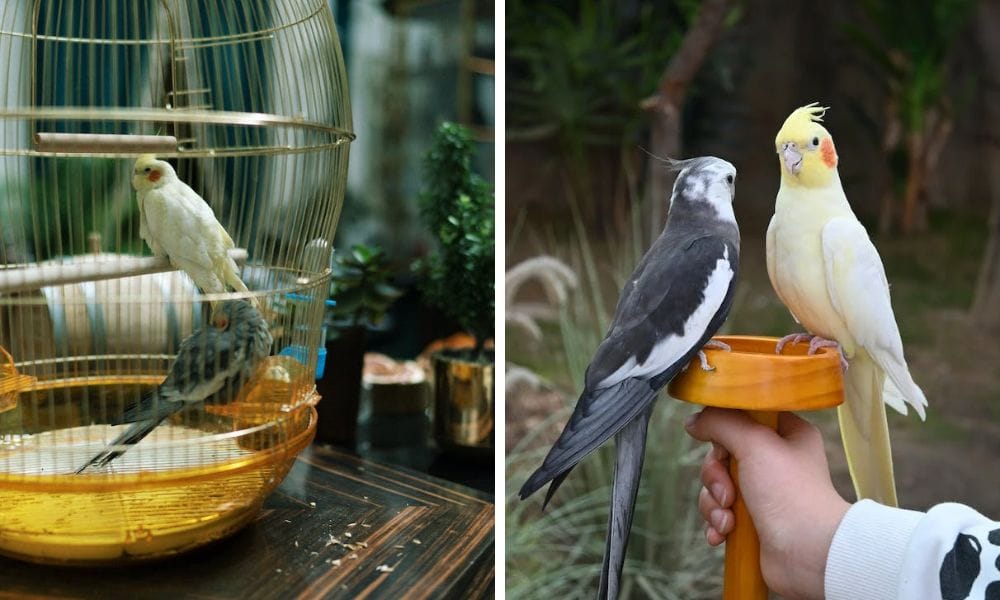
The Vibrant Variations: Exploring Cockatiel Colors and Markings
Cockatiels are a canvas of colors, and their plumage can be a delightful spectacle. The orange cheek patch is a signature trait, especially prominent in the male cockatiel. These facial feathers covering the sides of the head can vary in intensity, often serving as a visual cue to differentiate between males and females. Males typically boast brighter and more vivid cheek patches, while females may have a subtler hue. The light grey backdrop of the wild type provides a stark contrast, making these orange cheeks pop even more.
Beyond the cheeks, the cockatiel's plumage is a marvel of mutations. The lutino cockatiel is one such example, where the absence of grey and the presence of a light yellow body create a stunning bird. The lutino pearl variant adds a layer of complexity with its speckled appearance, resembling a pearl necklace draped over the bird's back and wings. These mutations not only add to the aesthetic diversity but also intrigue breeders and enthusiasts who seek to understand and propagate these beautiful variations.
The Fascinating Genetics Behind the Lutino Cockatiel
Have you ever wondered what makes the lutino cockatiel stand out with its stunning yellow plumage? It's all in the genes! The lutino cockatiel is one of the most sought-after mutations due to its vibrant coloration. This mutation occurs when the gene responsible for melanin production is inhibited, allowing the yellow and orange pigments to shine through. As a result, these birds boast a brilliant yellow face and body, with contrasting red eyes, which is a hallmark of the lutino variety.
Interestingly, the lutino gene is also linked to the cockatiel's plumage in other ways. For instance, it can affect the color of the outer edges of the wings and tail feathers, often resulting in a softer, more diluted hue. This genetic trait is recessive, meaning that both parents must carry the gene for their offspring to exhibit the lutino characteristics. Breeders often pair lutinos with other mutations to create a diverse range of colors and patterns, making each bird truly unique.
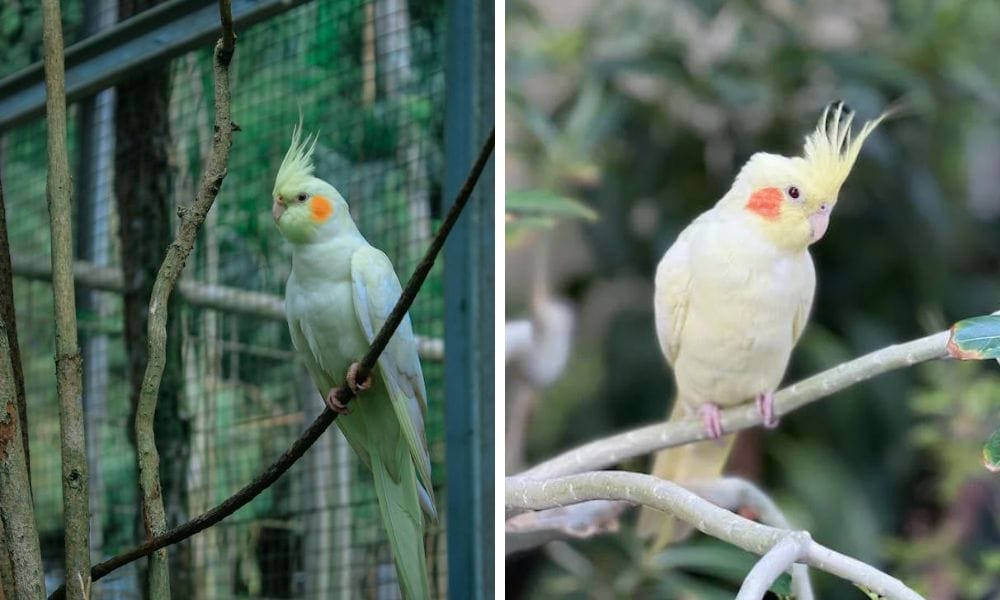
The Role of Color Mutations in Cockatiel Breeding
Breeding cockatiels can be an exciting venture, especially when it comes to mixing and matching different color mutations. Apart from the lutino, other mutations like albino, blue, and pied add to the kaleidoscope of colors that can be produced. The albino cockatiel, for example, is a stunning bird with pure white feathers and red eyes. It's actually a combination of the lutino and whiteface mutations, resulting in the absence of any color pigments in the cockatiel's plumage.
On the other hand, the blue mutation is a bit of a misnomer in cockatiels, as it doesn't produce a true blue color. Instead, it refers to a lack of yellow pigmentation, which can give the bird a cooler hue, particularly noticeable around the beak and feet. Breeders often experiment with these mutations to create birds with unique and attractive appearances. However, it's not just about looks; responsible breeders also pay close attention to genetic diversity and health when selecting which birds to pair.
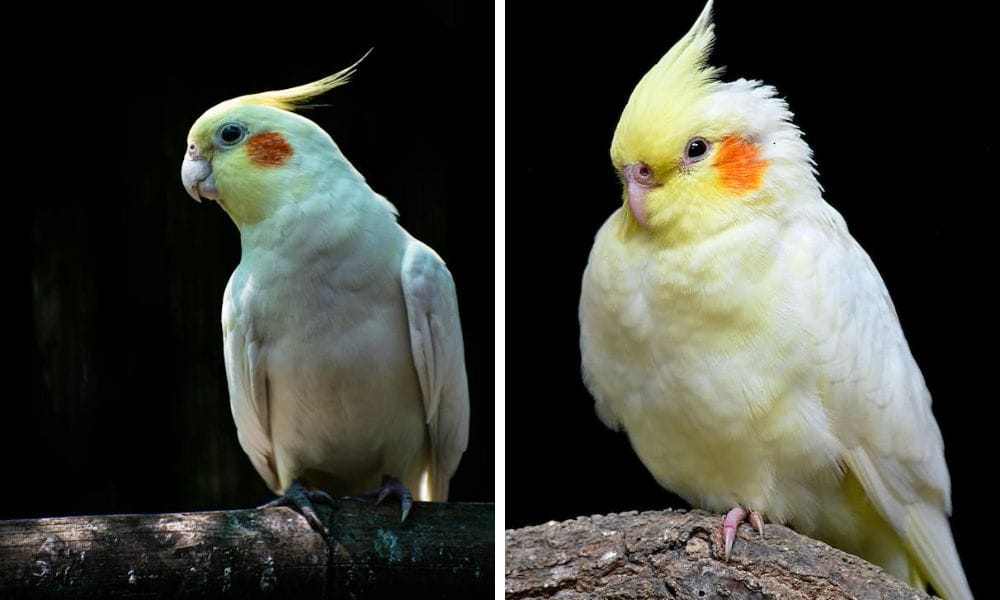
Cockatiel Companions: Understanding Their Social Needs
Cockatiels, much like other birds, are inherently social creatures. They thrive on interaction, whether it's with their human caretakers or feathered friends. In the wild, they are rarely alone, often found in flocks that navigate the skies together. This need for companionship should be mirrored in captivity, where providing a friend can mean a world of difference for their well-being. If you're considering a single bird, be prepared to become its flock, dedicating time each day for social interaction.
When it comes to pairing cockatiels, it's not just about having another bird in the cage. Compatibility is key, and careful observation of their behavior towards each other is crucial. Introducing a new cockatiel should be done gradually, ensuring both birds are comfortable and non-aggressive. Remember, their long tails and wings need space, so a larger enclosure is necessary to accommodate multiple birds. With the right setup and attention to their social needs, cockatiels can form lasting bonds, providing endless entertainment and affection to their human counterparts.
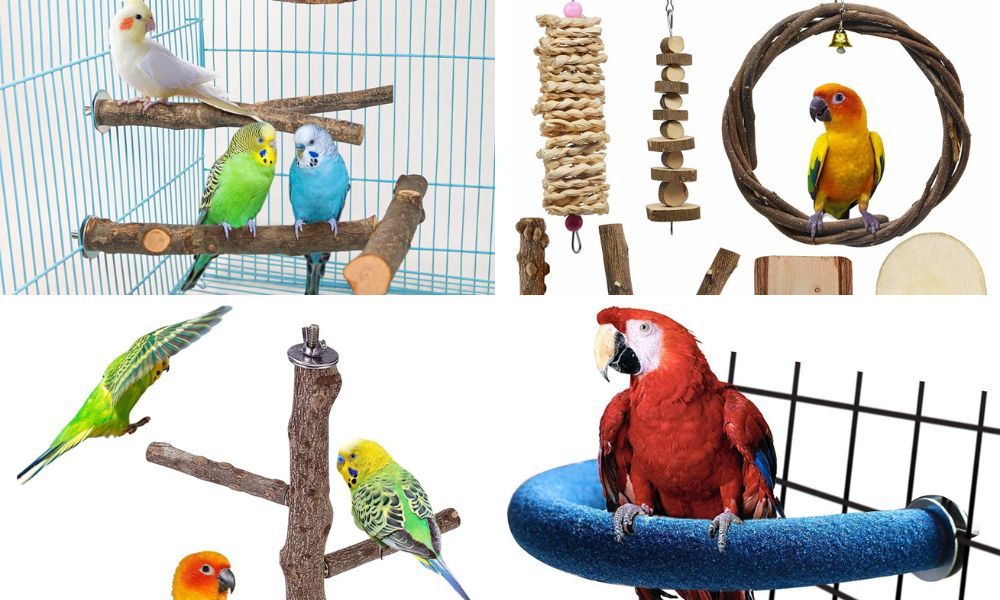
Housing Your Yellow Cockatiel
When it comes to housing your yellow cockatiel, selecting the right bird cage is crucial. The cage should be spacious enough to allow for flight and exercise, with horizontal bars for climbing. A nest box may be added for breeding pairs or as a cozy retreat. The cage should also be equipped with perches of varying diameters to promote foot health.
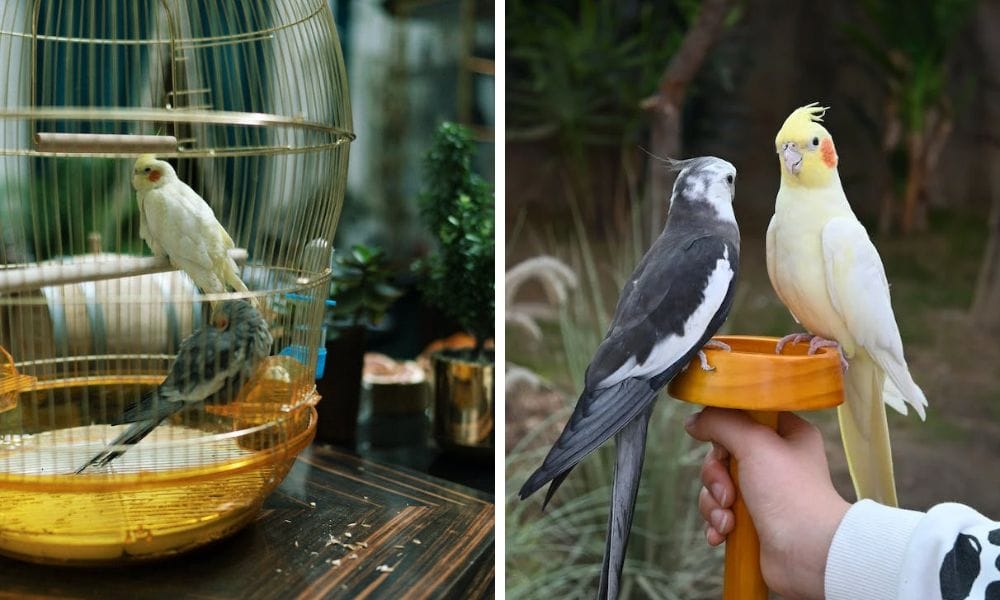
Diet and Nutrition: What to Feed Your Cockatiel
A balanced diet is essential for maintaining the health of your yellow cockatiel. A mix of high-quality pellets, fresh fruits, vegetables, and occasional seeds should be provided. It's important to avoid foods that are toxic to birds, such as avocado, chocolate, and caffeine. Fresh water should always be available.
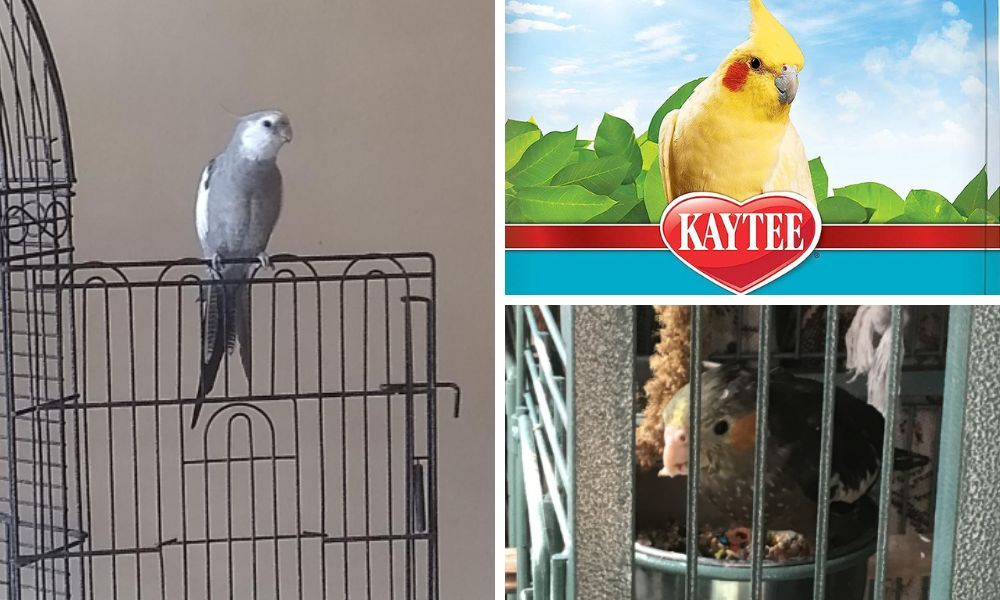
Social Interaction and Training
Cockatiels are social creatures that thrive on interaction with their human companions. Taking the time to talk cockatiels and engage in play can greatly enhance their quality of life. Training your cockatiel to perform simple tricks or to step up onto your hand can strengthen your bond and provide mental stimulation.
Health and Wellness: Recognizing Signs of Illness
Regular veterinary check-ups are important for your cockatiel's health. Be vigilant for signs of illness, such as changes in behavior, feather plucking, or respiratory issues. Early detection and treatment are key to ensuring your cockatiel remains a happy and healthy companion.
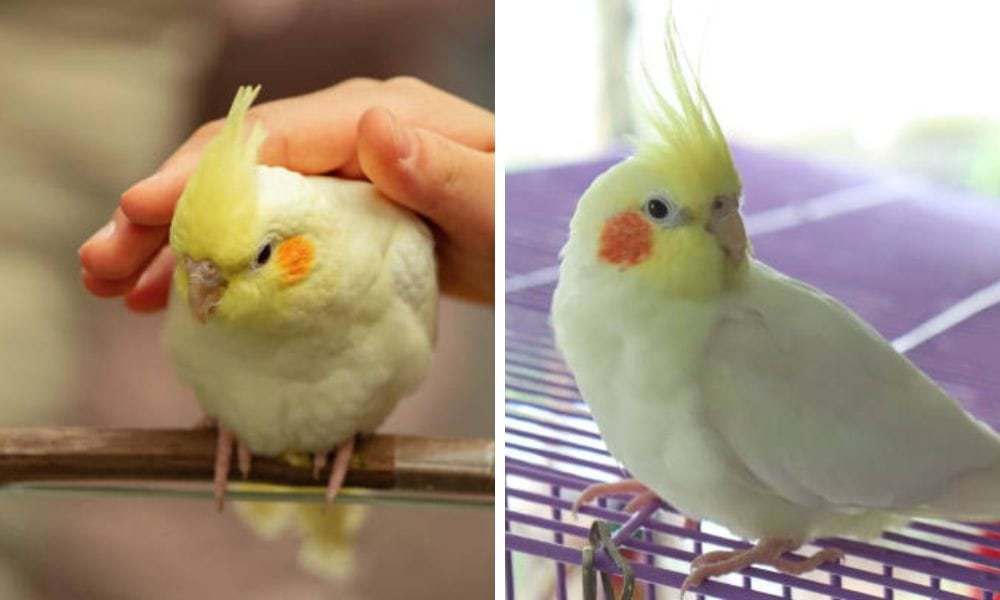
Breeding Yellow Cockatiels
If you're interested in breeding yellow cockatiels, understanding genetics and proper pair selection is vital. The lutino gene, being recessive, requires both parents to carry the gene for the offspring to exhibit the lutino phenotype. Breeding should be done responsibly, with consideration for the health and welfare of the birds involved.
The Yellow Cockatiel in Aviculture
The yellow cockatiel has made a significant impact on the aviculture world, with its striking appearance and endearing personality. Breeders continue to develop new color mutations, contributing to the diversity and beauty of this species in captivity.
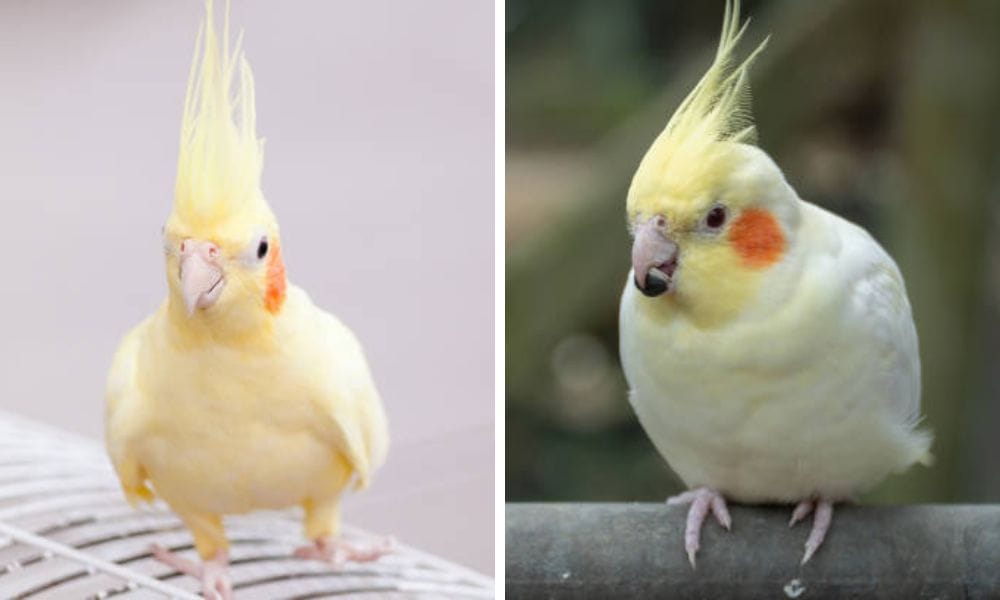
Summary
The yellow cockatiel is a beautiful pet bird that brings joy and color to many homes. Understanding their origins, recognizing the differences between mutations, and providing proper care are essential for any potential or current cockatiel owner. With their bright yellow feathers, playful nature, and ability to form strong bonds with their owners, yellow cockatiels are a delightful addition to the animal world.
FAQ Section
Q: How can I tell if my yellow cockatiel is male or female? A: Male lutino cockatiels often have a brighter yellow crest and tail feathers, while females may have a more subdued color and barred patterns on the underside of their tail feathers. However, these visual cues can be unreliable, and DNA testing is sometimes necessary for accurate sexing.
Q: What should I feed my yellow cockatiel? A: Your cockatiel's diet should consist of a variety of foods, including high-quality pellets, fresh fruits, vegetables, and a limited amount of seeds. Always ensure fresh water is available and avoid toxic foods like avocado, chocolate, and caffeine.
Q: Can yellow cockatiels learn to talk? A: Yes, cockatiels can learn to talk and mimic sounds, although their vocabulary is usually not as extensive as some other parrot species. Regular interaction and training can encourage your cockatiel to talk and perform simple tricks.

